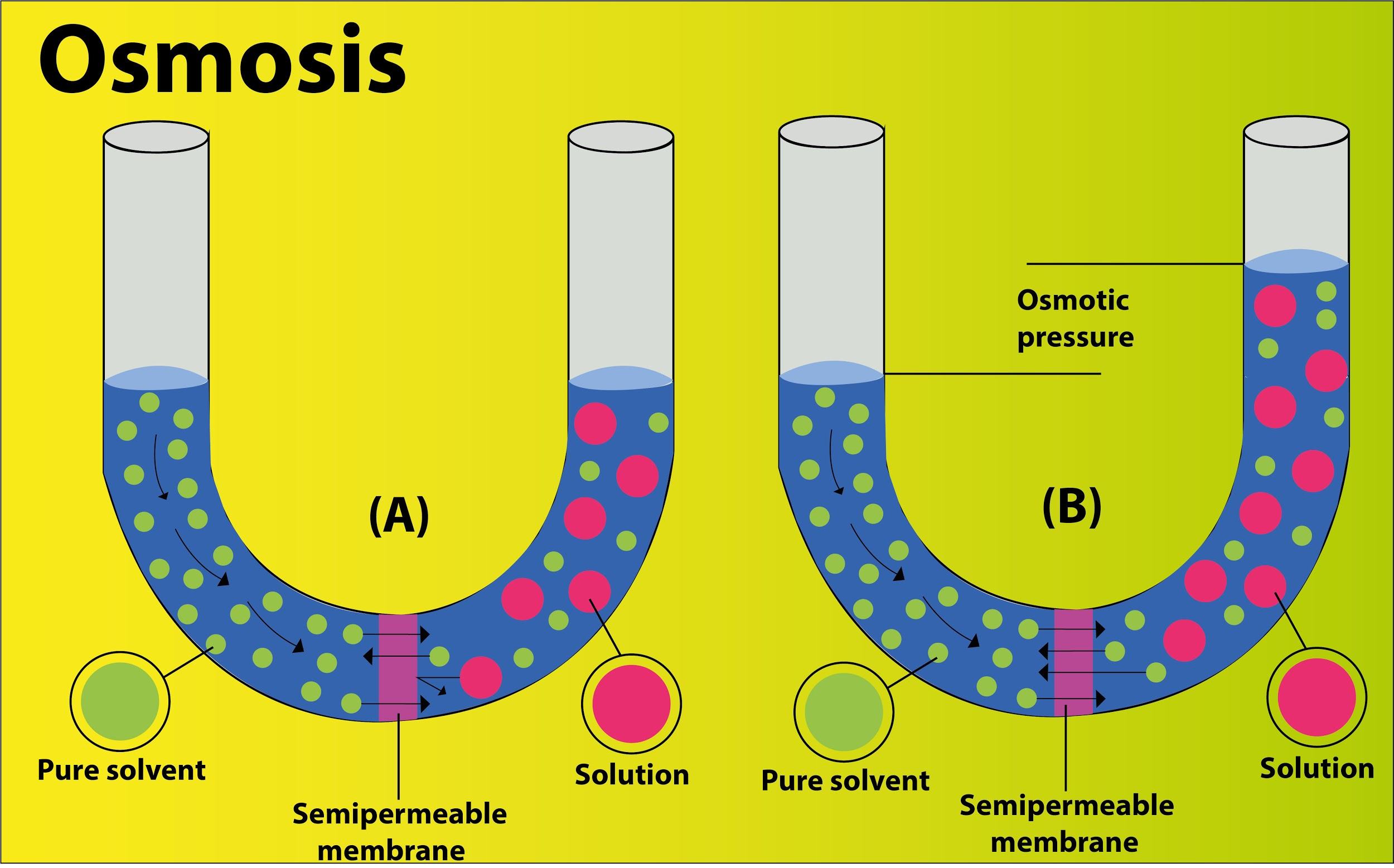
Osmosis is an example of active transport. True or False? Explain.
Answer
561.6k+ views
Hint: Osmosis is the spontaneous net migration of solvent molecules into a region of higher solvent concentration through a selectively permeable membrane in the direction that appears to equalise the concentrations of the solute on both sides.
Complete answer:
- Osmosis is a passive process. Hence, the given statement is False.
- Osmosis takes place from higher water potential to lower water potential.
- On dissolving solutes to water, the free energy of water (water potential) decreases.
- Osmosis operates on the basis of difference of water potential in between two solvents.The more solute dissolved in a solution, the less water potential it has.
- Passive transport doesn’t need any energy for its engagement where active transport mainly occurs against the concentration gradient with the help of energy.
- In biological systems, osmosis is a critical operation, since biological membranes are semi- permeable.

- These membranes are usually impermeable to large and polar molecules such as ions, proteins and polysaccharides, and are permeable to nonpolar or hydrophobic molecules such as lipids, as well as to small molecules such as oxygen , nitrogen, nitric oxide and carbon dioxide.
- By diffusing through the phospholipid bilayer through aquaporins (small transmembrane proteins similar to those responsible for facilitated diffusion and ion channels), water molecules travel through the plasma membrane, tonoplast (vacuole).
- Osmosis provides the main means of moving water into and out of cells.
- The cell turgor pressure is generally preserved between the cell interior and its comparatively hypotonic environments by osmosis across the cell membrane.
Note:
- The external pressure to be applied is known as osmotic pressure, so that there is no net movement of the solvent across the membrane.
- Osmotic pressure is a colligative property, which means that the osmotic pressure depends on the solution's molar concentration.
Complete answer:
- Osmosis is a passive process. Hence, the given statement is False.
- Osmosis takes place from higher water potential to lower water potential.
- On dissolving solutes to water, the free energy of water (water potential) decreases.
- Osmosis operates on the basis of difference of water potential in between two solvents.The more solute dissolved in a solution, the less water potential it has.
- Passive transport doesn’t need any energy for its engagement where active transport mainly occurs against the concentration gradient with the help of energy.
- In biological systems, osmosis is a critical operation, since biological membranes are semi- permeable.

- These membranes are usually impermeable to large and polar molecules such as ions, proteins and polysaccharides, and are permeable to nonpolar or hydrophobic molecules such as lipids, as well as to small molecules such as oxygen , nitrogen, nitric oxide and carbon dioxide.
- By diffusing through the phospholipid bilayer through aquaporins (small transmembrane proteins similar to those responsible for facilitated diffusion and ion channels), water molecules travel through the plasma membrane, tonoplast (vacuole).
- Osmosis provides the main means of moving water into and out of cells.
- The cell turgor pressure is generally preserved between the cell interior and its comparatively hypotonic environments by osmosis across the cell membrane.
Note:
- The external pressure to be applied is known as osmotic pressure, so that there is no net movement of the solvent across the membrane.
- Osmotic pressure is a colligative property, which means that the osmotic pressure depends on the solution's molar concentration.
Recently Updated Pages
Why are manures considered better than fertilizers class 11 biology CBSE

Find the coordinates of the midpoint of the line segment class 11 maths CBSE

Distinguish between static friction limiting friction class 11 physics CBSE

The Chairman of the constituent Assembly was A Jawaharlal class 11 social science CBSE

The first National Commission on Labour NCL submitted class 11 social science CBSE

Number of all subshell of n + l 7 is A 4 B 5 C 6 D class 11 chemistry CBSE

Trending doubts
10 examples of friction in our daily life

One Metric ton is equal to kg A 10000 B 1000 C 100 class 11 physics CBSE

Difference Between Prokaryotic Cells and Eukaryotic Cells

1 Quintal is equal to a 110 kg b 10 kg c 100kg d 1000 class 11 physics CBSE

State the laws of reflection of light

Explain zero factorial class 11 maths CBSE




